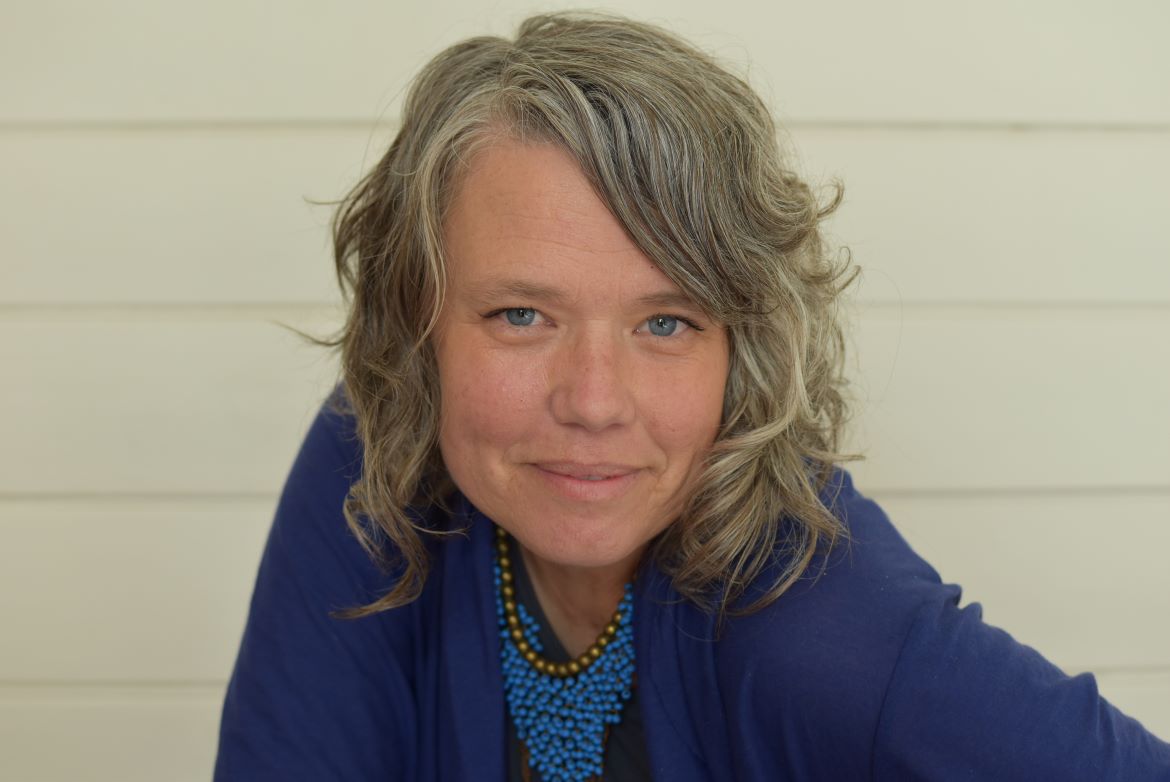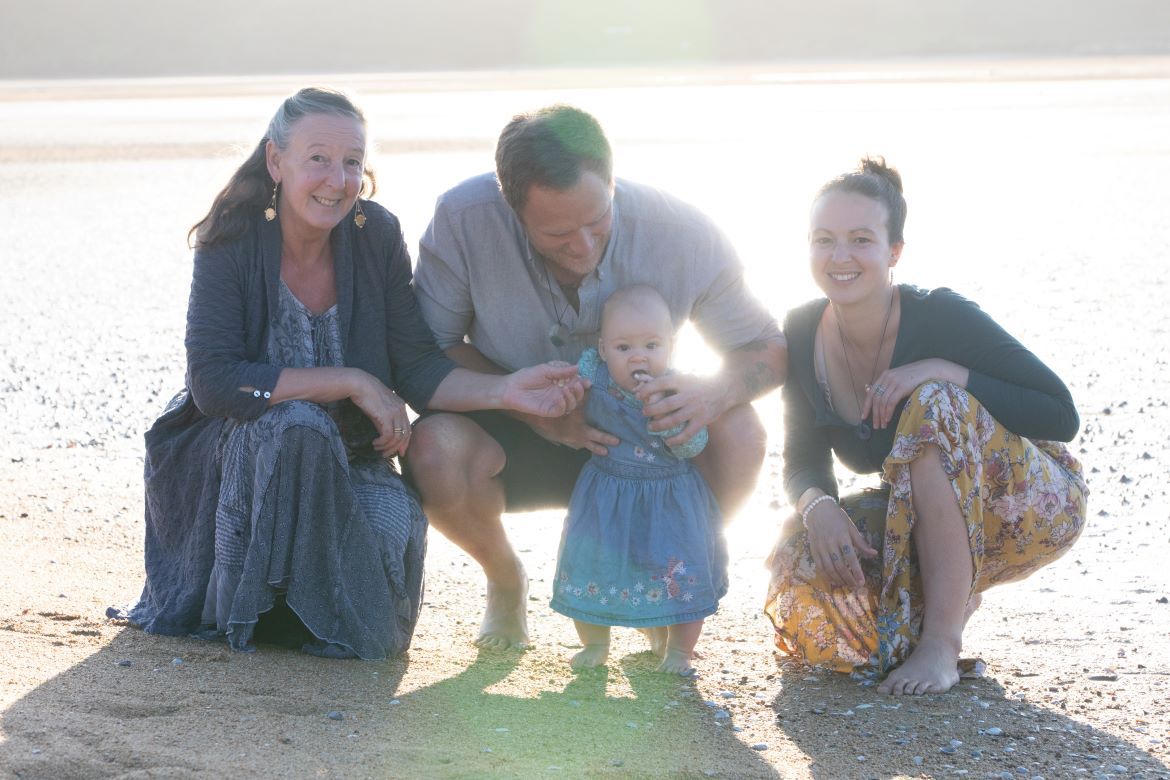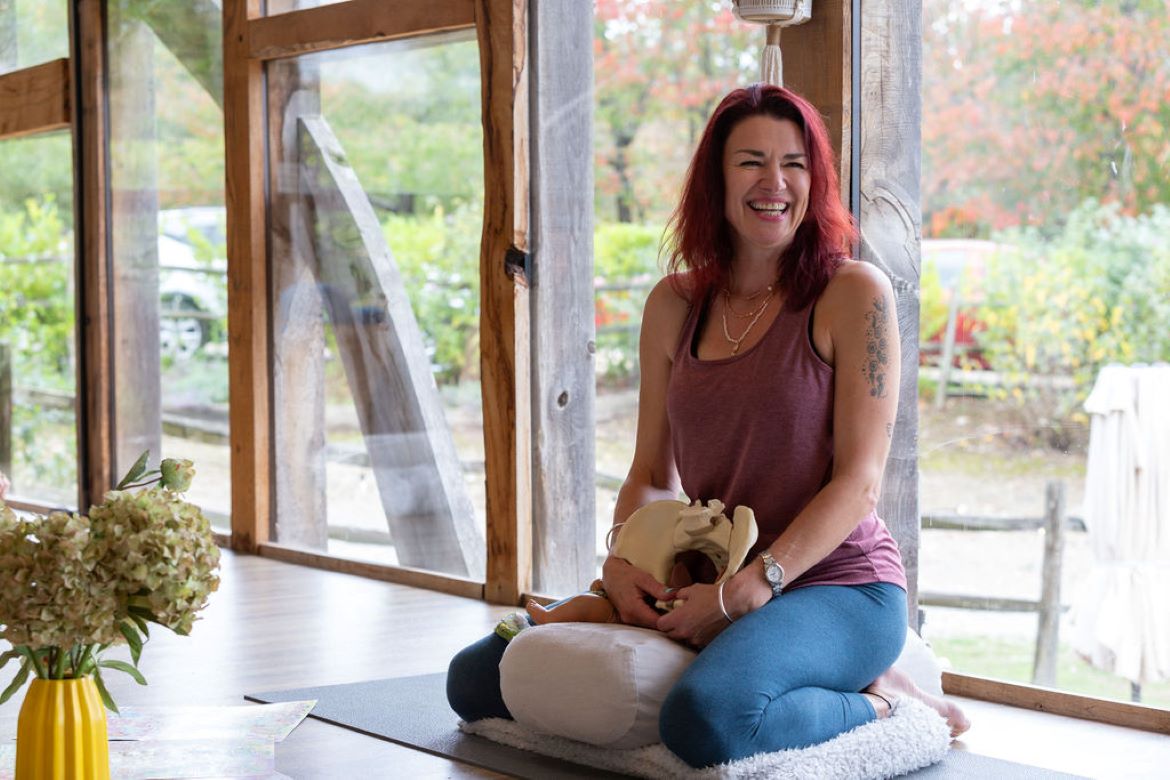Art has been a powerful healing tool for Jess Lovell: a way of deepening connection with herself. She sought support from a counsellor when she was in her twenties who suggested she express herself visually. From here, art became her trusted ally, and she later committed to her inner artist through a Bachelor of Fine Art and gaining her Masters of Therapeutic Arts Practice. She has worked in various settings including clinical psychology practice, secondary educational settings and in private practice. As an Expressive Arts Therapist, she walks beside you through life’s rich and potent threshold spaces, like motherhood, empowering you to bring your gifts into the world and lay the blueprint for your children to do the same. Here Jess talks to The Natural Parent Magazine about what inspired her to start Jess Lovell Art Therapy, the challenges she has overcome, and her hopes and dreams for the future.
The passion: What inspired you to set up your business?
Life’s rich and potent threshold spaces – like motherhood – are my inspiration to be of service as an arts therapist. Thresholds are the spaces of the unknown, that sit between where we have been and where we are going. Life has a powerful way of thrusting us into threshold spaces; it is here I am passionate about meeting clients and holding space for exploration and expression.
I call myself a Threshold Walker. I am in awe of the potent transformation and reclamation that is available in life’s initiation and threshold spaces. My Birthing the Mother art therapy series (a series of 1:1 expressive art therapy sessions) supports deep self-inquiry and not only acknowledges the wild initiation that is Motherhood, but we lean into it asking the question: what has Motherhood birthed within you?
My journey to arts therapy has been nourished and led by my lived experience of the transformative qualities of threshold spaces of chronic illness, motherhood and grief. Art has been – and continues to be – a most trustworthy ally. Art has been my voice for a long time…but not since the beginning. In the beginning there was a deep, rich, feeling, internal world. A sensitivity that could be so overwhelming that disconnecting from my body was often my preferred way of being. Hovering somewhere outside of myself was safer than being present to my internal experience of the world. It was suggested by my counsellor, during my twenties, to experiment using art as self-expression. I was in the collapse, despair and grip of Chronic Fatigue Syndrome. There were no words, no way to speak of it, no tools or known pathway out. I didn’t consider myself a creative person in THAT way. But I went with it.
Oh, hello body! Oh, hello trauma! Oh, hello needs and boundaries! Being facilitated in my art making not only helped to locate myself, process emotions and engage with my internal world; it also became new pathways to create safety for myself so I could move out of the trauma response freeze/shutdown holding pattern. I was being led by my art making. My felt sense was suddenly valued. Pieces of the CFS jigsaw were coming together.
Later on, I used art making to process my fears and explore my capacity to homebirth my children. I continued to use it to connect with myself during the early years of motherhood: to support the wild transformation I had put my hand up for and to find expression for a range of emotions that comes with a relationship showing cracks. Who was I now? How do I reconcile the biggest love I’ve ever experienced for my baby, with the sense of loss for who I was? (And what else is possible having birthed like a raw warrior woman?).
Not long after my initiation into motherhood, art became a life raft to navigate the aftermath of the unexpected death of my sister-in-law. This grief initiation cracked me wide open and thrust me into another transformative threshold space. Art led the way. Back to art school as a mature-aged student because life may be short; this grief initiation helped me to somewhat reconcile my own mortality which in turn surprisingly became its own supportive entity. Then later, full circle to study to become a registered arts therapist.
Art making is a powerful way to connect with the intangible and to make meaning. We can lean into the unknown and create safety as we go. We can do it with curiosity and gentleness and we can roar into the void. We access the qualities of the unknown in the form of colour, movement, shape, archetypes, stories or texture. We can attend to our fragmented and lost parts. We can connect to our emerging new selves. They may need shy introductions or bold reclamations.
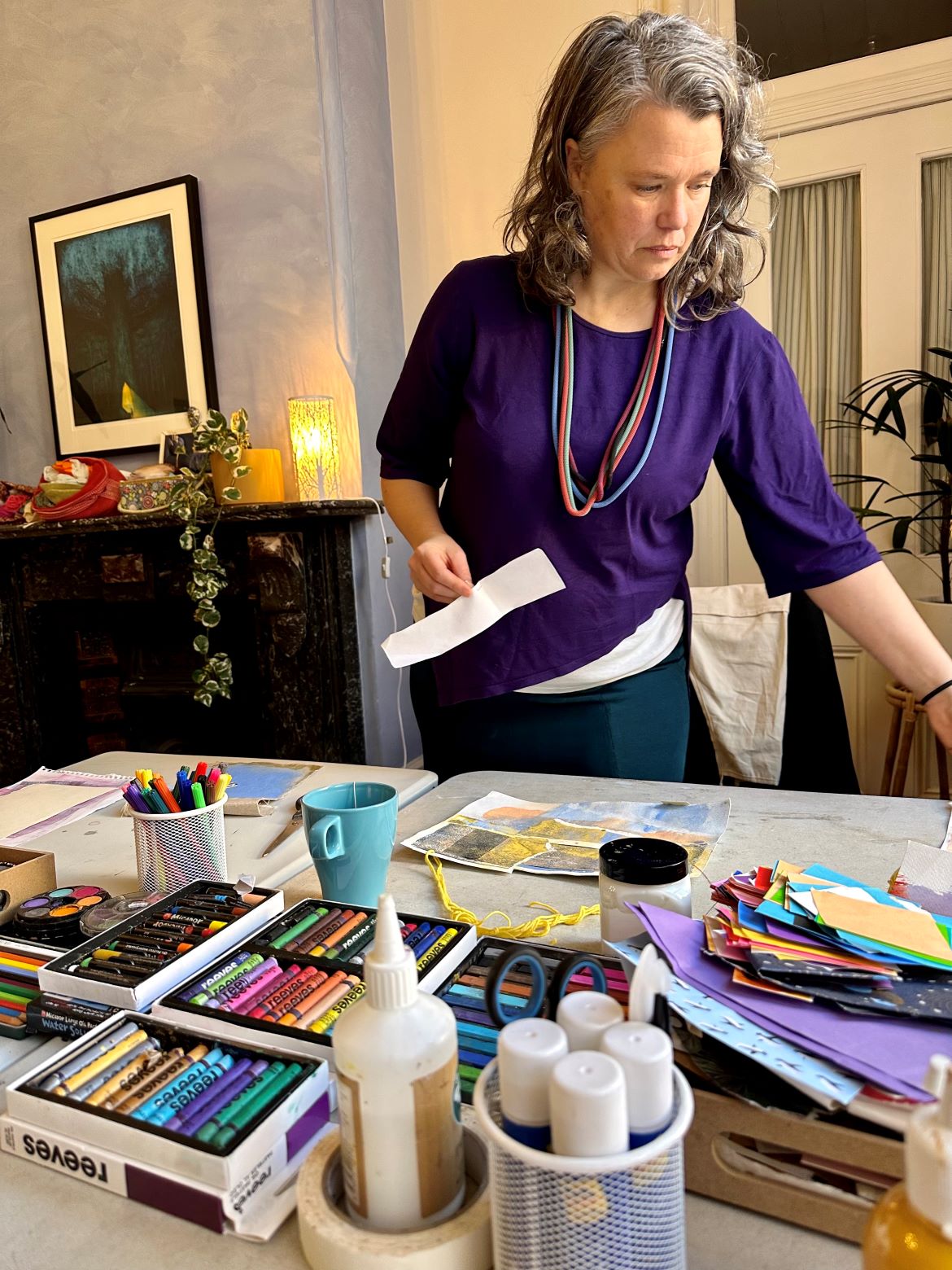

The launch: How did you start out in the beginning?
I hit the ground running after I finished my Masters of Therapeutic Arts Practice. It was my intention, for this later in life retraining, to change things. I landed a part time art therapist role with a psychologist private practice which meant I could leave my over two decades long (minus the stay-at-home mum years) stint in Education Support within schools. While this kept things steady, I still had a desire to set up something of my own so I could uncover and deepen into my passions to get clear about who and how I wanted to be of service. This took time. I rented a space casually to see clients while still holding down the part time role, put a website together and invested in an embodied business coach.
Working with a business coach through an embodiment lens has helped me to marry my internal masculine and feminine to combine my creativity and intuition with action and clarity. Both definitely need to be in relationship for me to run this business! Moreover, engaging with my business from an embodied perspective has allowed me to deepen into the alive and juicy current running through me of wanting to be of service to mothers. I believe that by acknowledging this deep initiation and leaning into this potent threshold space we can empower mothers to bring their gifts into the world…and lay the blueprint for their children to do the same.
The innovation: What was the biggest breakthrough for you with your business?
My biggest breakthrough was being made redundant. Yup.
There were many things I learnt in my role as an arts therapist at the psychologist’s practice: such as the intake process, how to hold boundaries over late cancellations and how to build a bridge over the sea of different paradigms that sits between arts therapists and psychologists.
But one of the biggest learnings was not to try to be a square peg when I’m a round one!
I tried hard. But it was like doing laps in the pool with swimming goggles that don’t fit correctly; they are uncomfortable, letting in water AND you don’t want to stop swimming and get out of the pool AND you don’t know how to fix it despite trying to make squish into your eye socket! It knew the position wasn’t the right fit (I’d set up my own business but it was still kind of on the side) but I was desperately holding on to the security of the salaried position. I knew I couldn’t fully spread my wings there but didn’t feel ready to fully fly elsewhere. So the universe decided for me. I was let go with dignity and respect and a lovely big farewell bunch of flowers. I was humbled, devastated and relieved all at the same time.
I’ve been committed to my business as a sole trader ever since. This commitment means committing to my skills, my gifts, healing and growth. In turn, I can hold these same spaces for others. Practise what you preach, I say.
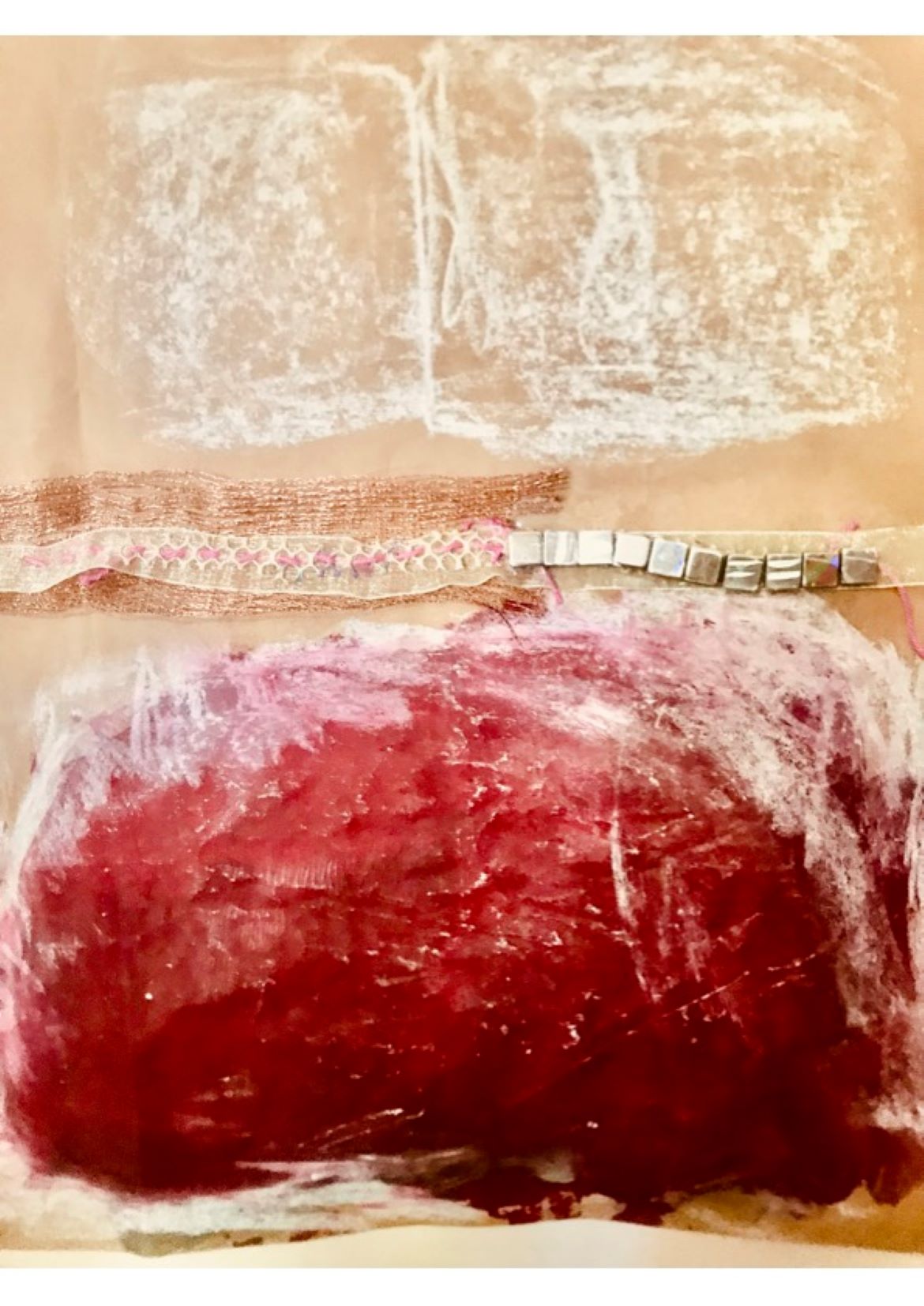

Yin and Yang: How do you balance work and family?
Family is everything….AND I need to pay for camps, new Vans sneakers and make sure there are enough quality snacks in the cupboard for growing bodies.
I may as well provide for my children by doing what I love. This is a legacy I am proud of. To get to this place has meant valuing myself, learning to have boundaries and trusting the needs of my children will still be met. I am learning that if I am willing to do the work to attend to my wounds, fears, shadow, etc., then, investing in myself and being a mother is possible. My self-worth can’t be attached to whatever versions of success I place on my business on any given day; and these expectations can vary wildly according to how many cups of black tea I’ve had in a morning.
Balancing work and family is accepting that I can’t meet everyone’s needs, all the time. So having everyone feeling heard is important, even if their needs can’t be met straight away. This has come from a foundation of journeying together (being open to learning about myself from my children) and tuning into their hearts and speaking from mine to create relationships of trust and safety over time. This is, of course, a fluid, sometimes clumsy and graceless (!) ongoing work in progress.

